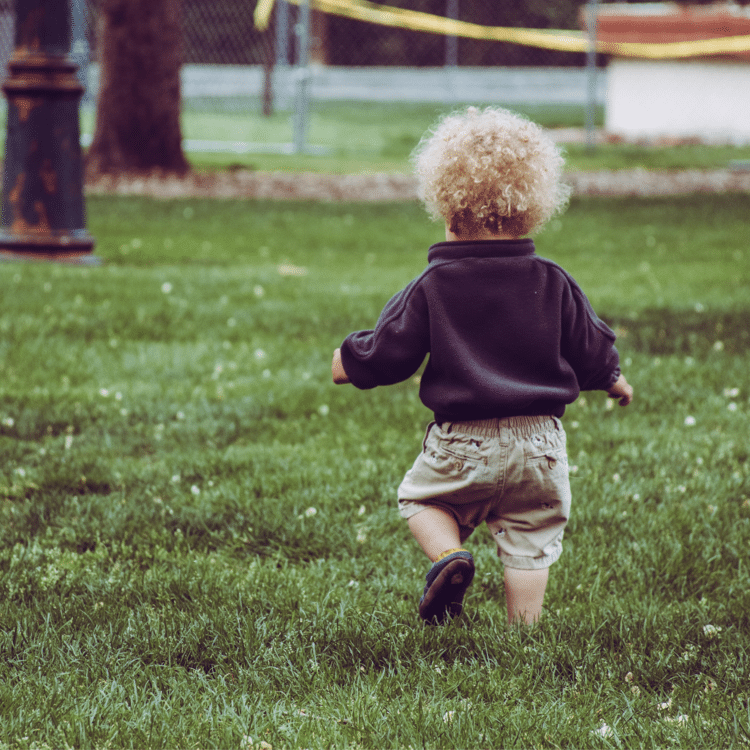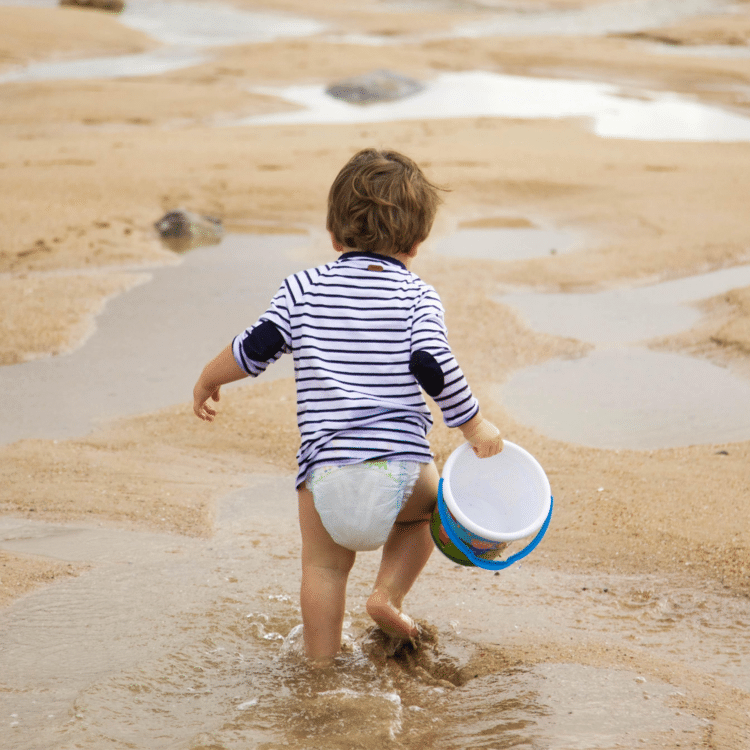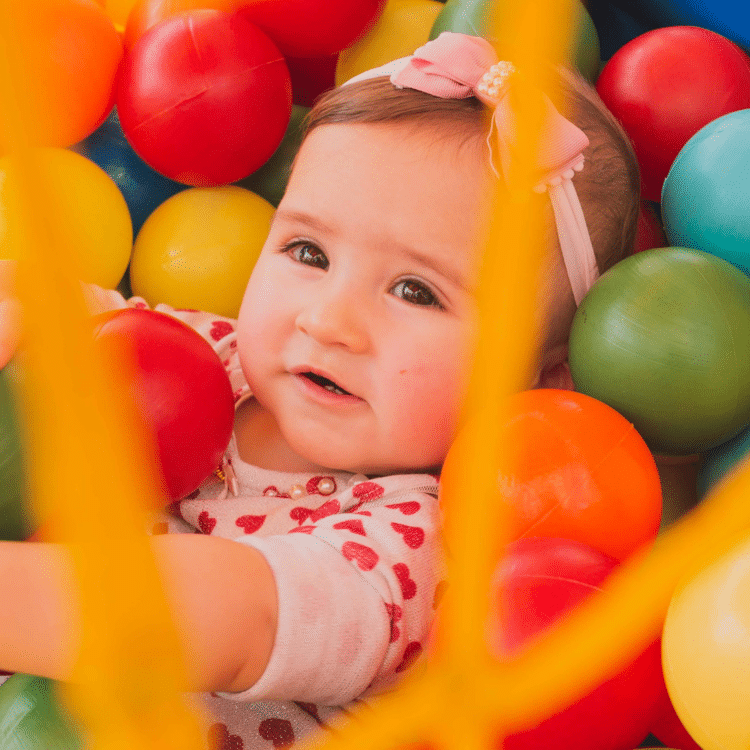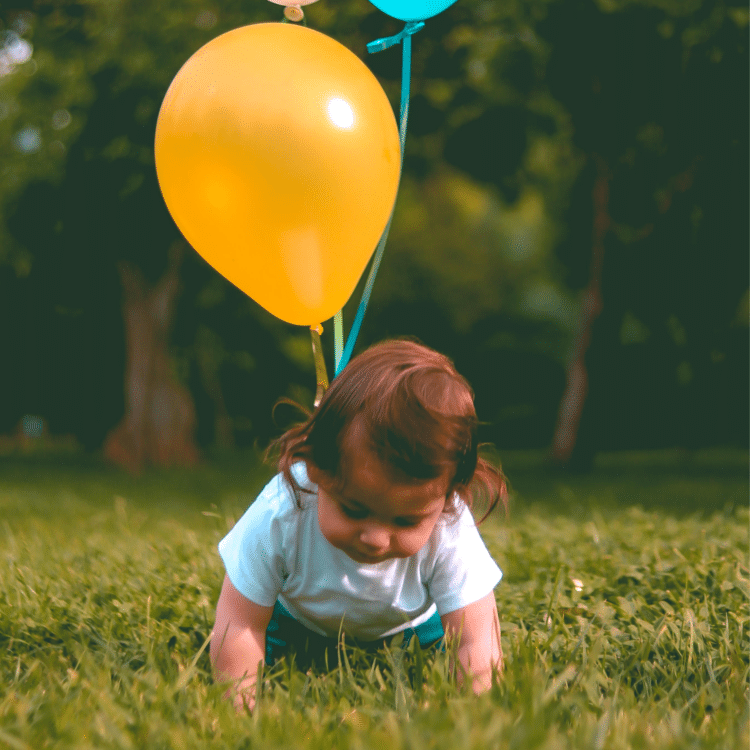Have you ever wondered why young children want to push, pull, lift and carry objects so much? They do so because of an inner drive to develop a sensory system called proprioception, sometimes referred to as the sixth sense. Whilst the vestibular system is responsible for your baby’s internal sense of balance, the proprioceptive system manages the external sense of the world in which they move.

The development of this system starts with baby’s first movements in the womb. When their arm presses against the uterine wall, their proprioceptive and tactile receptors are activated and they start to learn about their body parts and how they move. Once they are born, every one of their movements helps them to form a map of their body. Whether it’s being massaged, kicking feet against her car seat, playing on their tummy, or exploring their face with their hands, they are continuously adding information to their body map about the relative position on her body parts and how to use them.
Like the vestibular system the development of proprioception requires hundreds of different kinds of stimuli and movement experiences every day for many years. The better the connections the more we are able to feel, manage and control our body which makes us feel more confident, capable, self assured and resilient.
Proprioceptive receptors are sensors positioned at the end of nerve endings in all our muscles, tendons, joints, ligaments and in the inner ear (where the vestibular system is located). These sensors send information to the brain about our position in space, our relationship to that space and the conditions of the environment and objects we encounter. This happens instantly and automatically every minute of the day, even when we are sleeping. A well developed sense of proprioception gives us a strong awareness of our body, allowing us to move our bodies in just the right way to achieve what we need it to. A remarkably large area of our brain is dedicated to “body maps” and it takes a lot of work to develop and maintain this area of the brain, especially for children whose bodies are constantly changing.
Proprioception coordinates four interrelated navigation tools:

In order to use their body to explore and learn, your baby must first explore and learn about their own body. It is made up of two parts:
When your baby moves their proprioceptive sensors are helping to create a relationship between their body and brain, a bit like the body and brain learning to talk to each other. This new body and brain relationship brings about body confidence, contribution to self esteem and a feeling of “look what I can do”. The one catch is that as they grow and their bodies change there is a constant need for them to relearn their body map and body design. If they suddenly seem to be in a clumsy stage or unable to do something they could do a week ago it might be that they have had a growth spurt and the brain is adapting to these changes. The only way it can do this is through movement.
While body awareness is your baby’s internal sense of unity between body and brain, spatial awareness is their intuitive sense of how the body fits within space and moves through it. For example, in order to move through a crowded room you might find yourself turning your body sideways to squeeze through. Children need to develop this spatial awareness, hence why they bump into things a lot. This emerging understanding not only helps them to avoid bumping into things, but it also affects their relationship between objects. Without this ability they may not be able to put a cup on the table or post a letter. Tasks such as this require judgement about size, shape and mass and how they all fit together. Spatial awareness also influences: handwriting, problem solving and physical activity.
Think of how as an adult you rarely fall out of bed. This is because your body subconscious has been finely tuned over the years so that your sleeping body senses the edge of the bed and avoids you going over it. The proprioceptors throughout your body keep track of where you are and enable your brain to work on a subconscious level to look after you. Our sense of intuition (along with vision and vestibular system) helps us to work out size, shape, scope, and mass or architecture and landscapes around us, such as how much space is there between the sofa and the coffee table.
Intuition helps you to work out how much energy is needed for a particular task. For example, you might try to attempt to pick up a box that you do not know the weight of. Before you know it your proprioceptors have sent a message to the brain about how much force is required and the muscles in the body kick into action to adjust your position and the amount of energy needed for the task. Sometimes little ones do not know their own strength and cause an accident as a consequence. It might look like clumsiness or even naughtiness but it is probably their strength management in training.

